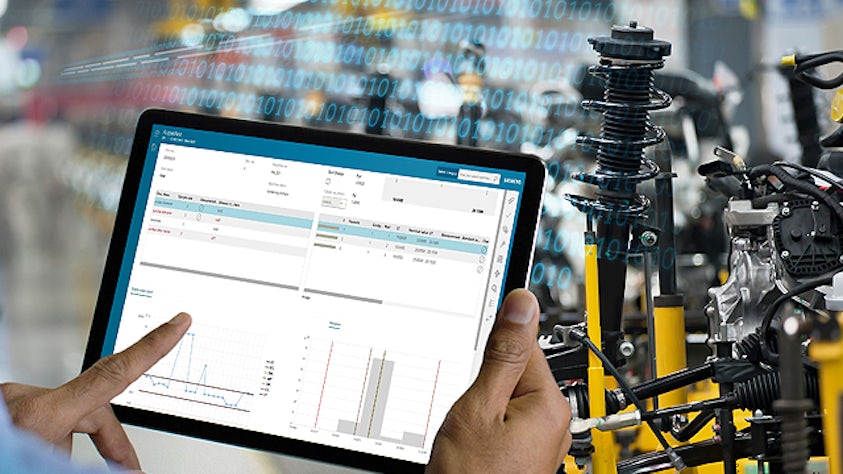精益生产计划和调度有时被视为有助于识别和稳定消除浪费的工具,日语术语“muda”被称为浪费。通过基于MOM的精益制造软件,可以减少或消除每种浪费。
由于发现缺陷 所需的检查工作以及修复或消除缺陷所需的纠正措施,缺陷会造成浪费。借助精益制造软件,制造商可以在缺陷形成之前轻松搜索并包含不合格材料。通过防错和“一次成功”的努力,精益生产计划和制造执行软件确保:
- 使用正确的材料
- 测量值在规格范围内
- 操作员经过适当培训
- 设备维护和校准保持更新
- 遵循正确的程序
因此,制造商可以减少废品、缺陷和返工。
生产过剩 会增加与在制品 (WIP) 和库存相关的成本,从而产生浪费。通过 先进的计划和调度软件,精益生产实践将客户订单和工作订单更紧密地联系在一起。精益生产计划和调度通过实时查看订单状态和库存水平,实现更好的工作优先级和时间管理。
等待 是浪费,因为设备和人员的空闲时间会降低生产力和吞吐量。精益生产计划和调度软件使制造商能够改善操作员、物料搬运工、维护和生产步骤的同步。支持精益制造软件的数据基础设施提供了即时通信的手段,并减少了空闲时间。
材料、组件、在制品和成品的库存浪费了用于移动和存储的空间和时间,也增加了材料在使用之前过期的可能性。精益制造通过创建一个拉动系统来限制每个工序的队列并执行 FIFO/LIFO 规则,从而大幅减少库存。该软件提供了可见性,提高了在制品和成品库存的准确性。
当材料和文件不必要地移动或移动较长的距离时,运输就会变得浪费。精益制造软件优化了材料移动并消除了纸质文档,从而使信息以数字速度传输。
过度加工 会使在制品或成品的加工或处理次数成倍增加,从而产生浪费。精益制造软件通过消除手动数据输入并立即提供数据和分析结果来减少过度处理。
当加工涉及不必要的设备或人员移动时,移动就是一种浪费。精益制造软件通过以下方式消除不必要的移动:
- 减少数据输入
- 消除文书工作的准备、处理和审查
- 自动分发信息
- 确保材料被引导到正确的位置
精益制造的五大原则
为了实施精益生产,公司通常遵循五种做法或原则。精益生产使用以下五步流程来创建持续改进:
- 识别价值 - 由于精益制造的主要目标是消除任何不会为最终客户增加价值的东西,因此确定客户认为成品的价值非常重要。各种研究(如调查或访谈)可用于从客户和潜在客户那里获取这些信息。
- 创建价值流图 - 价值流标识了制造过程中创造客户已确定的价值的那些方面。相反,制造业中不属于价值流的任何方面都是浪费的——无论是必然的还是不必要的。生产中必要的非价值方面通常可以通过某种方式减少(例如,消耗的生产时间或成本)。根据定义,不必要的非价值方面是浪费。精益制造的目标是消除这些。
- 生成流程 - 价值流图确定了制造过程的哪些方面是有价值的,而过程流则回答了过程的方式。它寻求从原材料到在制品 (WIP) 再到成品的最有效方法。延迟或中断会为制造资源创造空闲时间。工艺流程旨在消除这些。
- 建立“拉取”(创建按需流程)- 成功的工艺流程可以识别制造过程中材料、耗材、在制品或成品堆积的点。在“拉动”方法中,需求(即客户订单)是主要标准,先进的计划和调度系统可以优化这些事情的调度和移动,从而大幅减少库存,而不会使任何流程步骤缺乏所需的资源。这种方法体现了 准时 制原则。
- 不断改进和完善 - 持续的流程改进需要持续循环完成该流程的前四个步骤。如今,制造过程从传感器、测试和过程文档中生成大量数据。随着这些数据被挖掘出来以获得新的制造见解,公司可以获得新的信息,以发现和消除以前未被发现的废物来源。



